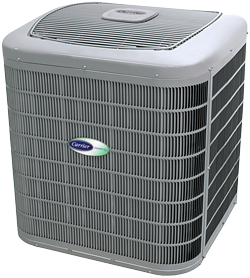We have made it to the big week! Thanksgiving Day is this Thursday, and the thoughts of cooks across America are centered on cooking the perfect bird this year. Over the years, the trend of deep frying turkeys has become more and more popular, and now it’s a regular feature on Thanksgiving tables everywhere. Who doesn’t love a delicious, juicy bird with crispy, golden skin??
Unfortunately, turkey frying comes with lots of risks, and you need to carefully weigh out the pros and cons before deciding whether or not deep-frying your Thanksgiving entree is the best choice for you. If you do decide to “take the plunge” (or rather, allow your turkey to take the plunge), we have some precautions and safety tips to follow, which will hopefully give you a strategy that is both safe and effective on the big day.
First, what are the pros of deep-frying a turkey rather than traditional roasting? It’s a faster cooking method first of all, as it usually takes an average of 3 minutes per pound of meat, meaning that even a large bird will likely be done in under an hour. Keep in mind though, that is only factoring cooking time, and not the time for the oil to come to the correct temperature, and the time for cool off and clean up afterward. Another pro of fried turkey is the skin. Deep-frying your bird, when done correctly, will leave you with juicy, tender meat inside, and a crispy, browed skin on the outside. Finally, many cooks like deep-frying as it’s more forgiving than traditional roasting. Even if you go a little over the minimum internal temperature (or get a few minutes behind in tracking the time of your turkey) you will still have a bird that is tasty and mostly moist. Roasting, on the other hand, will dry out your meat quickly and doesn’t offer a lot of flexibility with time and temperature.
For all the pros though, there are many cons to frying a turkey. Frying is not notoriously healthy, and while that’s not necessarily the first thought on your mind at the Thanksgiving table, it can be a problem for those who are supposed to avoid fried foods for health conditions. Frying your turkey also comes with a variety of safety risks, mainly grease fires and/or burns. There are lots of ways that the process can go wrong, and it can lead to disastrous results.
Still, if the idea of crispy turkey skin makes you go weak at the knees, frying could be a great way to change up the Thanksgiving menu this year.
So, if you do decide to fry your bird, how do you do it safely?
- Make sure your bird is COMPLETELY thawed, and thoroughly patted dry both on the inside and outside. Ice has a way of hiding out in the cavity of a turkey, especially between the rib bones, and this can cause major issues when dropping a turkey into hot oil.
- Make sure your bird is the correct size for the fryer you chose, and be sure to fill the container with the correct amount of oil; no more, no less. The oil level can lead to lots of accidents, especially if it spills over the top of the fryer and hits the burner below, causing a grease fire.
- There are two types of fryers and making sure you have set them up correctly is vital to your safety and success with turkey frying. Outdoor fryers need to be placed on a completely flat, non-flammable surface, with at least 10 feet of clearance all the way around. A fire-extinguisher that is specifically for grease-related fires needs to be kept nearby during the entire frying process, and the ONLY person near the fryer should be the one cooking the bird. Children and pets need to be kept inside, or at the very least, FAR away from the area where the turkey is being fried. Indoor fryers, on the other hand, are a little safer than their outdoor counterparts (since they are enclosed) but they still need to be handled cautiously, and kept a good distance from kids and pets. Make sure to read the instructions for your fryer completely several times, regardless of the type you choose.
- Get dressed for the task. Closed toe shoes, pants, and heavy duty gloves or oven mitts need to be worn when frying a turkey. This is not the time for our typical Floridian flip-flops and shorts. If oil splatters and hits exposed skin, it can mean a serious burn for you. You are better to limit exposed skin and use protective wear!
We hope you will keep these things in mind if you choose to fry your Thanksgiving bird this year, and we hope your turkey turns out HOT…but your house does NOT. If you notice the temp starting to rise inside, it’s time to call Ridge to the Rescue. Our team offers 24-hour emergency service for commercial and residential AC systems throughout Polk, Highlands, and Hardee counties. We make sure your home stays cool and comfortable for you and your holiday guests.
Happy Thanksgiving from our family to yours!






